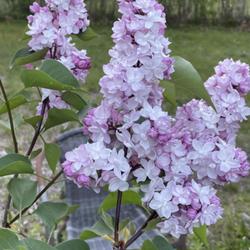By Steven V. Dubin
Do you want to live to 100? Or 110?
For most of us, it is less about the number of years than the quality of our life.
My wife led me to the Netflix four-part series and documentary “Live to 100: Secrets of the Blue Zones” that explores this issue.
Spoiler alert. The series is still worth watching even after I reveal the Blue Zone secrets in this article.
This lively series takes you around the world and into the lives and home of those who have defied time. Those who live in the Blue Zone.
The term “Blue Zone” was first used by the author Dan Buettner, who was studying areas of the world in which people live exceptionally long lives. Fun note – Buettner, currently in his 60s, holds the world record for most miles bicycled. He bicycled around the world as a younger man.
Blue Zones earned their name because when Buettner and his colleagues were searching for these areas, they drew blue circles around them on a map.
Centenarians, people who live to be at least 100 years old, modestly hold the secrets of how to improve longevity. By studying how they live, perhaps we can unlock the keys to a longer, healthier life.
So? Where Do Centenarians Live?
They include:
• Ikaria, Greece
• Loma Linda, California
• Sardinia, Italy
• Okinawa, Japan
• Nicoya, Costa Rica
To be considered a Blue Zone, these five areas had to meet certain criteria.
• Documentation. The areas where people lived the longest had to have documentation (like birth certificates and death records) that were factual, reliable, and available for review.
• Life expectancy of the country. The life expectancy of the population living in the country had to be among the highest in the world. These life expectancy computations took into consideration numerous demographic factors, sex, and overall population age.
• Regional life expectancy. Once the first two criteria had been met, the researchers could hone in on the region where the population lived the longest. To determine where that region was, researchers considered the probability of life expectancy at certain ages in each region (the probability that a person would live from age 50 to 80, etc.).
• Once these criteria have been met, the researchers dive into the local culture, talking to the residents and observing their lifestyles to determine what sets them apart from the rest of the world.
Nine Blue Zone factors
Patterns emerged. Even though these regions were on completely different continents, they all shared nine factors.
1. Natural Movement
Physical activity is important, but not what you’d expect. Blue Zones are not for gym rats or overexertion. The centenarians demonstrated a life of constant, natural movement.
Walking, gardening, shopping, cooking, and cleaning are examples of these everyday activities that drive Blue Zone inhabitants. Move more and sit less. One difference between American movement and the movement in these zones is that the people have less access to modern conveniences like public transportation, gardening, and lawn care services, or grocery delivery.
This lack of modern convenience drives people to move more to accomplish the same things that are accomplished in America without as much movement.
2. Understanding Purpose
A main theme among the inhabitants of Blue Zones is understanding and having a purpose. Okinawans call it “Ikigai.” This sense of purpose is directly tied to a higher life expectancy, a sense of community, continuing to develop and interact with a social network, and enjoying a less stressful life. Having a clearly defined reason to live was associated with an additional seven years of life.
3. Less Stress, Less Inflammation
Chronic stress can be a significant problem. Stress negatively impact a person’s mental health, but it also breeds low-level inflammation in the body. The inflammation is associated with age-related diseases like heart disease and Type 2 diabetes. In Blue Zones, people manage stress daily by praying, meditating, or partaking in happy hour.
4. Eating Less
Part of a Blue Zone diet is simply eating less. Okinawans call it the 80% rule. They eat until they are 80% full and then stop eating. This is one reason they experience lower rates of obesity than other regions of the world. In addition, most people living in Blue Zones taper their meals. This means they eat most of their food in the morning, tapering their meals by early evening and not eating the rest of the day.
5. Less Meat, More Plants
There are numerous benefits of a plant-based diet, like less calorie intake and a reduced risk of certain age-related illnesses. Blue Zone inhabitants in every region have a diet that consists primarily of plants, specifically legumes like lentils, black beans, fava beans, and soy. They also eat very little meat, usually no more than a small three- to four-ounce portion, about five times per month.
6. Wine Time
There’s conflicting research about the use of alcohol. The World Health Organization has advised against consuming alcohol altogether. However, Blue Zone centenarians seem to be an exception to the rule. Centenarians in Blue Zones (excluding Seventh-Day Adventists) drink wine regularly, but it’s important to note how and when they drink it. According to research, wine is consumed daily after 5 p.m. and always with friends and family. It’s also important to note that the amount of wine consumed is limited (no more than one to two small glasses). The type of wine, usually Sardinian, is also important.
7. Establish a Sense of Belonging
The centenarians that were interviewed for the documentary all belonged to some type of faith-based community, except five. These types of communities establish a sense of belonging, bring purpose and meaning to life, and help people continue to feel needed and purposeful.
8. Keep Family Close
Researchers noticed that in Blue Zones, nursing homes and senior care facilities were almost non-existent. Why? Families in these areas cared for their ailing and aging relatives themselves in their own homes. Keeping their families close had benefits not just for the aging but also for children living in the home. It also established a pattern that was adopted by children brought up in these households; they, too, assumed the responsibility of caring for aging parents.
9. Support One Another
The longest-living people were found in groups of supporting, caring people. These people had either chosen their tribe or been born into them. The Okinawans refer to them as moais. These groups of people take care of and look after one another. Whether it means taking each other to doctor appointments or simply meeting for breakfast, these small social groups helped increase the well-being of the members and supported a longer, happier life.
Healthy behaviors are contagious, and simply surrounding themselves with like-minded people helped increase the lifespan of Blue Zone centenarians.
Get blue and let me know how you do!
If you know of a senior who is doing something interesting with their retirement, I look forward to hearing from you! Please email me at SDubin@PRWorkZone.com
Steven V. Dubin is the founder of PR Works, a lightly used public relations firm based in Plymouth which helps small to mid-sized nonprofit organizations and for-profit companies navigate the overwhelming options of advertising. Steve lives in Plymouth with his wife, Wendy. He is a contributing author to “Get Slightly Famous” and “Tricks of the Trade,” the complete guide to succeeding in the advice business. He recently authored “PR 101,” an E-book.



